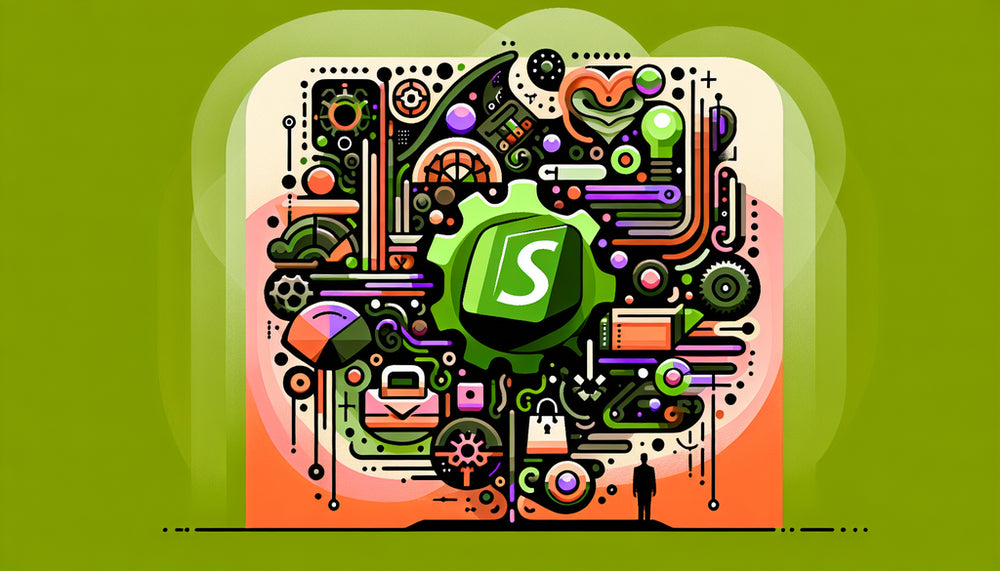How to Use Customer Webhooks in Shopify to Enhance Your E-commerce App

Table of Contents
- Introduction
- What Are Shopify Customer Webhooks?
- Setting Up Customer Webhooks in Shopify
- Handling Customer Webhooks Effectively
- Advanced Topics: Scaling and Security
- Conclusion
- FAQs
Introduction
Imagine running an online store and needing to constantly check for new orders or customer sign-ups. Now, picture a tool that alerts your app the moment such events happen, sparing you the hassle and ensuring your app is always up-to-date. This is precisely where Shopify customer webhooks come into play. These notifications offer real-time updates, enabling seamless integrations and efficient operations.
In this blog post, we're delving into the intricacies of customer webhooks in Shopify. You'll learn what they are, how to set them up, and why they are crucial for your e-commerce app. By the end of this guide, you'll understand how to leverage Shopify customer webhooks to enhance your app's functionality and performance. If you're a developer or entrepreneur looking to make the most out of Shopify, this post is tailored for you.
What Are Shopify Customer Webhooks?
Customer webhooks in Shopify are automated HTTP callbacks triggered by specific events in a Shopify store. These webhooks ensure that your application is informed in real-time whenever certain actions occur, such as customer creation, cart updates, or order cancellations.
Key Benefits
- Real-Time Updates: Receive immediate notifications whenever important customer-related events occur.
- Reduced API Calls: Minimize the need for continuous polling, freeing up resources and improving app performance.
- Efficient Data Handling: Process and respond to events instantly, ensuring your store’s information remains current.
Examples of Customer Webhooks Use
- Customer Creation: Automatically send a welcome email when a new customer account is created.
- Cart Updates: Monitor cart updates to recommend additional products or provide timely offers.
- Order Status: Track order status to update customers on their purchase progress in real-time.
Setting Up Customer Webhooks in Shopify
Creating webhooks in Shopify involves a straightforward process through the Shopify admin interface or programmatically via the Shopify API. Here’s a step-by-step guide:
Via Shopify Admin Interface
- Navigate to Webhooks Section: Go to Settings > Notifications > Create Webhook.
- Choose Event: Select the event you want to track (e.g., ‘customers/create’).
- Set URL: Input the URL where you want the webhook data sent.
- Select Format: Choose either JSON or XML for the payload.
- Save: Click ‘Save’ to activate the webhook.
Programmatically via Shopify API
To create webhooks via API:
- Authentication: Ensure you've authenticated your app with the necessary permissions.
-
Send POST Request: Use the
POST /admin/api/2023-01/webhooks.jsonendpoint.
Example:
{
"webhook": {
"topic": "customers/create",
"address": "https://yourapp.com/webhook",
"format": "json"
}
}
Testing Your Webhooks
Testing ensures that your webhooks function reliably. You can:
- Use Shopify’s Webhook Simulator: Available in your Shopify admin.
- External Tools: Ngrok or Hookdeck to route and inspect webhook payloads.
Handling Customer Webhooks Effectively
Data Structure
When Shopify sends a webhook, it includes various headers and a payload with detailed event data. Here’s how to handle it:
- Parse Headers: The headers contain metadata about the webhook, such as shop details and event time.
- Validate Request: Ensure webhook integrity by verifying the HMAC signature with your app’s secret key.
- Process Payload: Extract and utilize the necessary data from the payload to trigger internal processes or updates.
Example in Node.js:
const crypto = require('crypto');
function verifyWebhook(req, res, next) {
const hmac = req.get('X-Shopify-Hmac-Sha256');
const body = JSON.stringify(req.body);
const secret = process.env.SHOPIFY_SECRET;
const hash = crypto.createHmac('sha256', secret).update(body).digest('base64');
if (hash === hmac) {
next();
} else {
res.status(401).send('Unauthorized');
}
}
Responding to Webhooks
For essential actions like customer creation or cart updates, here’s what you can do:
-
Customer Creation:
- Send a welcome email.
- Add the customer to your CRM.
-
Cart Updates:
- Update stock levels.
- Trigger promotional emails or offers.
Error Handling and Failures
Shopify expects a 200 OK response to confirm webhook receipt. If your endpoint fails or sends a non-200 status, Shopify retries the webhook for up to 48 hours. Here's how to manage this:
- Log Failures: Keep a log of failed webhook attempts for troubleshooting.
- Automated Retries: Implement mechanisms to reprocess failed webhooks.
Advanced Topics: Scaling and Security
Multiple Webhook Endpoints
For apps with high traffic or various functionalities, consider using multiple endpoints to distribute the load. This ensures reliability and performance.
Pub/Sub Services
Integrate services like Google Pub/Sub or Amazon EventBridge for advanced event handling capabilities. These services offer robust message queuing and processing, ideal for scaling.
Security Best Practices
- HMAC Validation: Always validate the HMAC signature to prevent unauthorized access.
- HTTPS: Ensure webhook endpoints are secure and use HTTPS.
- Rate Limiting: Protect your endpoints from potential abuse by implementing rate limiting.
Conclusion
Customer webhooks in Shopify are a powerful feature that ensures your app stays responsive and up-to-date with minimal effort. By leveraging these webhooks, you can significantly enhance the functionality and user experience of your e-commerce application. From real-time customer notifications to efficient data handling, the possibilities are vast.
Incorporating Shopify webhooks into your app can lead to improved performance, reduced server load, and a seamless customer experience. Whether you're a seasoned developer or an e-commerce entrepreneur, understanding and utilizing webhooks effectively can provide a significant edge.
FAQs
What Are Shopify Webhooks and How Do They Work?
Shopify webhooks are automated callbacks triggered by specific events in a Shopify store. They send real-time notifications to a specified URL, enabling your app to respond immediately.
How Can I Test Shopify Webhooks?
Testing Shopify webhooks can be done using Shopify’s webhook simulator, or through external tools like Ngrok or Hookdeck, which route and inspect webhook payloads.
What Are the Security Best Practices for Shopify Webhooks?
Ensure secure HTTPS endpoints, validate HMAC signatures to authenticate webhook requests, and implement rate limiting to protect against abuse.
Can I Use Multiple Webhook Endpoints?
Yes, using multiple endpoints can help distribute the load, ensuring better performance and reliability for high-traffic applications.
How Do I Handle Failed Webhook Deliveries?
Log failures for troubleshooting and implement automated retries. Shopify retries undelivered webhooks for up to 48 hours.
By following these guidelines and best practices, you can effectively utilize Shopify customer webhooks to enhance your e-commerce operations and provide a superior customer experience. Happy coding!
Discover more customization possibilities.
Whether you’re looking to create a unique storefront, improve operations or tailor your Shopify store to better meet customer needs, you’ll find insightful information and expert tips here.

Rich Text Metafield Shopify: A Comprehensive Guide

Comprehensive Guide to Shopify Import Metafields CSV

Shopify Image Metafields: The Ultimate Guide

Efficiently Using Shopify GraphQL to Retrieve Product Metafields

Shopify How to Make a Custom Gift Card

Unlocking the Power of Shopify GraphQL Product Metafields

Shopify GraphQL: Revolutionizing E-commerce Development

Maximizing Your Shopify Store with Global Metafields

Shopify Flow Metafields: Enhancing Automation with Custom Data

Shopify Filter Products by Metafield

Shopify if Metafield Exists: A Comprehensive Guide

Shopify Filter Metafield: A Comprehensive Guide

Shopify GraphQL Update Metafield

Shopify Customize Product Page: The Ultimate Guide

Shopify Custom Page Template: A Comprehensive Guide

Shopify Draft Orders: A Comprehensive Guide

Shopify Custom Metafields: Unleashing the Power of Personalization for Your Store

Shopify Edit Product Metafields: A Comprehensive Guide

Shopify Dynamic Metafields — A Comprehensive Guide

Shopify Customer Account Fields: A Comprehensive Guide

The Comprehensive Guide to Adding a Shopify Custom Text Field

How to Shopify Customize Collection Page for a Standout Online Store

Shopify Custom Page Builder: Unleash the Power of Personalization

Shopify Contact Form Custom Fields

Shopify Custom Landing Page: Creating Effective and Engaging Landing Pages

Shopify Create Product Metafields: A Comprehensive Guide

Mastering Shopify Collections with Metaobjects

Shopify Custom Checkout Fields: Enhancing User Experience

Harnessing Shopify Collection Metafields with Liquid for Advanced Customization

Shopify Checkout Page Customization App: An In-Depth Guide

Mastering Shopify Custom Form Fields

How to Efficiently Handle Shopify CSV Import Metafields

Shopify Create Metaobject: A Comprehensive Guide

Shopify Blog Metafields: Unlocking Custom Content for Blogs

Shopify Add Metafield to All Products: A Comprehensive Guide

How to Add Metafields to Product Pages in Shopify

Shopify Add Metafields: A Comprehensive Guide

Shopify Check If Metafield Exists

Shopify Bulk Import Reviews

Mastering the Shopify Admin: Your Ultimate Guide to Managing an Online Store

Shopify Bulk Import Metaobject: A Comprehensive Guide

Shopify Bulk Import Metafields: A Comprehensive Guide

Shopify Bulk Editor: An In-Depth Guide to Streamline Your eCommerce Business

Shopify Add Fields to Customer Registration Form

Mastering Product Metafields in Shopify Liquid

How to Save Shopify Webhook: A Comprehensive Guide

Shopify Access Metafields: A Comprehensive Guide

How to Add Custom Fields to Orders in Shopify

Mastering Shopify Product Update Webhooks





